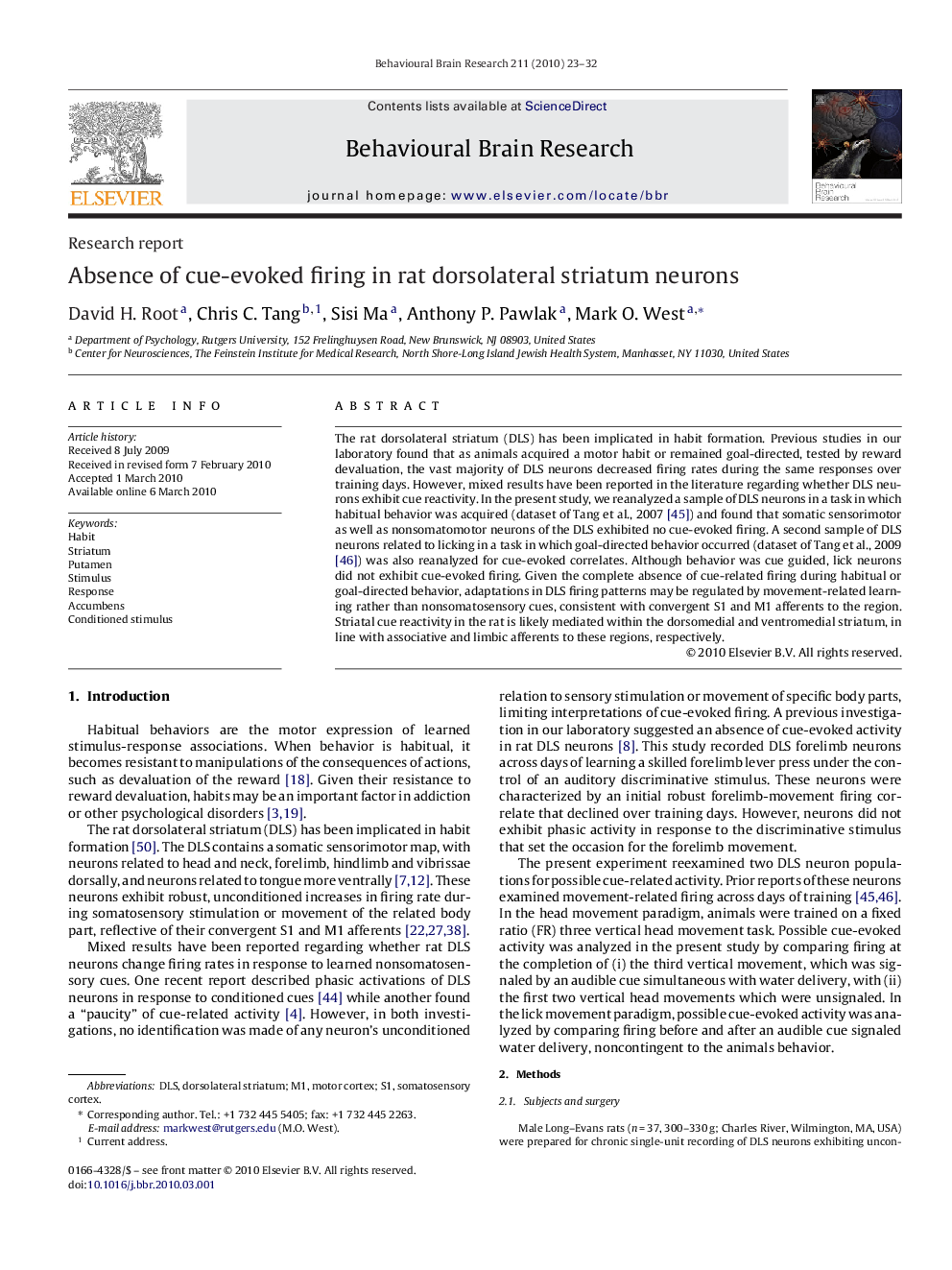| Article ID | Journal | Published Year | Pages | File Type |
|---|---|---|---|---|
| 4313837 | Behavioural Brain Research | 2010 | 10 Pages |
The rat dorsolateral striatum (DLS) has been implicated in habit formation. Previous studies in our laboratory found that as animals acquired a motor habit or remained goal-directed, tested by reward devaluation, the vast majority of DLS neurons decreased firing rates during the same responses over training days. However, mixed results have been reported in the literature regarding whether DLS neurons exhibit cue reactivity. In the present study, we reanalyzed a sample of DLS neurons in a task in which habitual behavior was acquired (dataset of Tang et al., 2007 [45]) and found that somatic sensorimotor as well as nonsomatomotor neurons of the DLS exhibited no cue-evoked firing. A second sample of DLS neurons related to licking in a task in which goal-directed behavior occurred (dataset of Tang et al., 2009 [46]) was also reanalyzed for cue-evoked correlates. Although behavior was cue guided, lick neurons did not exhibit cue-evoked firing. Given the complete absence of cue-related firing during habitual or goal-directed behavior, adaptations in DLS firing patterns may be regulated by movement-related learning rather than nonsomatosensory cues, consistent with convergent S1 and M1 afferents to the region. Striatal cue reactivity in the rat is likely mediated within the dorsomedial and ventromedial striatum, in line with associative and limbic afferents to these regions, respectively.
